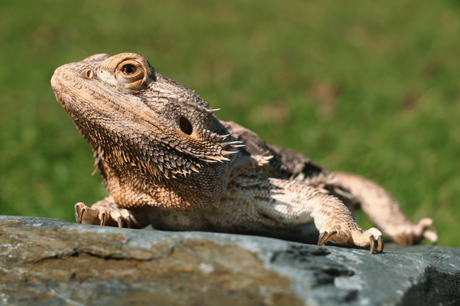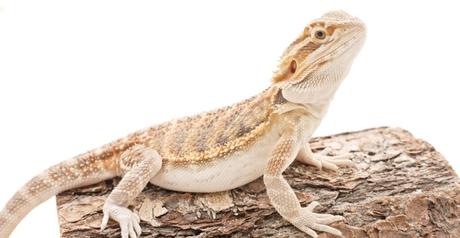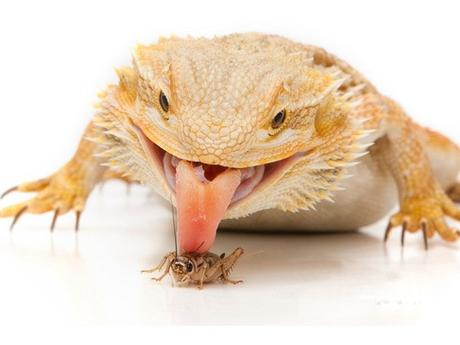, the oldest bearded dragon ever recorded, died at the age of 18 years and 237 days! Even though reaching this age is uncommon, it demonstrates that with good husbandry and care, longevity can be increased.
There are several imposing factors that influence why some bearded dragons live longer than others; let's look at what these factors are and how they affect their life span.
Aging
Aging is a natural process that all living things go through, including Bearded Dragons.
After sexual maturity, most living things degenerate slowly; as time passes, cell regeneration slows, and older cells are no longer replaced and function as effectively as they did when they were younger, causing us to age and our bodies to decline, making us more susceptible to disease and death.
The rate of degeneration varies greatly between species, with some degenerating faster than others.
Thermoregulation

Bearded dragons are ectotherms (cold-blooded); in the wild, they control their body temperature by basking in the sun in a process known as thermoregulation, which leads to a decreased metabolic rate and extends their lifespan.
It is critical in captivity to provide the bearded dragon with an adequate heat source. The ideal temperature for a bearded dragon's vivarium is between 22 and 26 degrees Celsius in the shaded end and between 38 and 42 degrees Celsius in the light end for basking. The heat lamp should be turned on first thing in the morning to give your dragon about an hour to recharge for the day. Failure to do so will inevitably result in a shorter life span.
Size
Larger species typically have longer lifespans than smaller ones due to their increased body mass. Because they are more effective at fending off predators and are less likely to be attacked by them, larger species can spend more time growing and reproducing in the wild. On the other side, small reptiles have a poorer chance of surviving in the wild since they can't get big enough to defend themselves.
Environment
Neglected bearded dragons are prone to illness and disease. Poor husbandry is to blame for the majority of bearded dragon health issues; it accounts for roughly 70% of reptile illnesses and diseases, as well as 20% of reptile deaths each year. It is critical that the four fundamental basics of husbandry are managed correctly for bearded dragon longevity. These are:
Failure to get these fundamentals correct can result in the following:
More information on Bearded Dragon Diseases can be found at Bearded Dragon Diseases - Prevention and Cure!
Diet
Bearded Dragons are typically omnivores, eating invertebrates, fruit, and plants.
For a full list of food: Bearded Dragon Food List
Maintaining a healthy diet for your bearded dragon is absolutely essential to its longevity. Failure to provide a consistent diet can result in a variety of diseases and even death.
Here are some things to think about when planning your bearded dragon dietOver Feeding
Bearded dragons in the wild expend excess energy by being active for the majority of the day, and limited food sources ensure that they consume only what they need. Bearded dragons in captivity should be fed carefully and exercised on a regular basis, as this can lead to obesity and disease.
Bearded Dragons are Ectotherms (cold-blooded animals) that spend 80% of their energy on thermal regulation. They would naturally go without food for a day or two in the wild; this is their natural state. As a result, providing them with multiple meals per day is likely to result in obesity.
High Sugar Content
Fruit with a high sugar content should be consumed in moderation. In addition to being unhealthy, Fruit is naturally soft and can get stuck in the mouth of a bearded dragon, causing mouth and gum infections.
Due to their lower reproductive capacity, female bearded dragons have shorter life expectancies. As the belly expands, the limbs and pelvis lose mass. Her life is shortened and her entire body is affected by these disorders.
How to Increase Your Bearded Dragon's Life Span

Proper care and husbandry can extend the life of a Bearded Dragon.
Unfortunately, there are several mistakes that most owners make that shorten the life of their Bearded Dragon.
- Insufficient Temperature
- Inadequate UVB Lighting
- Unbalanced Diet
- Failure To Recognise Symptoms Of Illness & Disease
- Inadequate Enclosure Size
Fortunately, these faults are easily avoidable.
We'll walk you through each mistake and show you how to prevent it.

A nutritious diet will keep your dragon happy and healthy. Furthermore, it increases the bearded dragon's life span because providing it with a healthy diet rich in balanced nutrients helps it stay healthy and fend off disease.
Depending on their developmental stage, you should feed them a nutrient-rich diet.- Hatchlings and juvenile bearded dragons should be fed more insects because they require more protein in their diet.
- Adult bearded dragons that are no longer developing require a diet that is higher in plants and vegetables.
It's critical to keep track of what foods you feed them and how long it's been since their last meal.
A calcium supplement should be added to hatchling food at least five times per week. Adults should take a supplement once a week, and juveniles should take one every day.
Note: Too much calcium can harm organs and cause bowel problems if calcium intake is not reduced. Adults' droppings turn yellow when they consume a lot of calciumFor More Information: Feeding Bearded Dragons - 2022 Quick Guide
There are five basic fundamentals of husbandry. Following these guidelines will ensure that your bearded dragon lives a long and happy life.
Housing, temperature, lighting, humidity, and water are all factors to consider.
Bearded dragons require 40-gallon tanks with the proper amount of substrate, hides, and branches. Even the absence of these essential components will shorten their lifespan.
Your bearded dragon pet may consume some substrates. This can have serious health consequences. Use only non-particle substrates to reduce the possibility of impaction (such as dragon carpets).
Temperature
It is critical to provide an adequate heat source for the bearded dragon in captivity. A bearded dragon's vivarium should be between 22 and 26 degrees Celsius in the shaded end and between 38 and 42 degrees Celsius in the light end for basking. To give your dragon an hour to recharge for the day, turn on the heat lamp first thing in the morning. Failure to do so will result in a shorter lifespan
Another common oversight is the absence of a darkened area. The temperature source should not run the entire length of the tank. This could cause overheating. A Dragon requires thermal inclination as well as a calm side with cover.
Lighting is a critical component of the bearded dragon enclosure because it creates an artificial night and day cycle. Second, the UVB light provides Vitamin D3 to the lizard through basking.
Maintaining a humidity level of 30-40% can help to prevent respiratory infections. Another factor that can shorten their life expectancy is respiratory illnesses.
Keeping your bearded dragon healthy and disease-free is critical to its longevity. The leading cause of illness and disease in bearded dragons is poor husbandry. The second step is to keep track of your bearded dragon's health in order to extend its life. Early disease detection and prevention are critical.
Here are some of the diseases and illnesses that bearded dragons can contract.
Check out this video from Nature's Edge Wildlife and Reptile Rescue on YouTube to see how severe MBD can become if left untreated.
